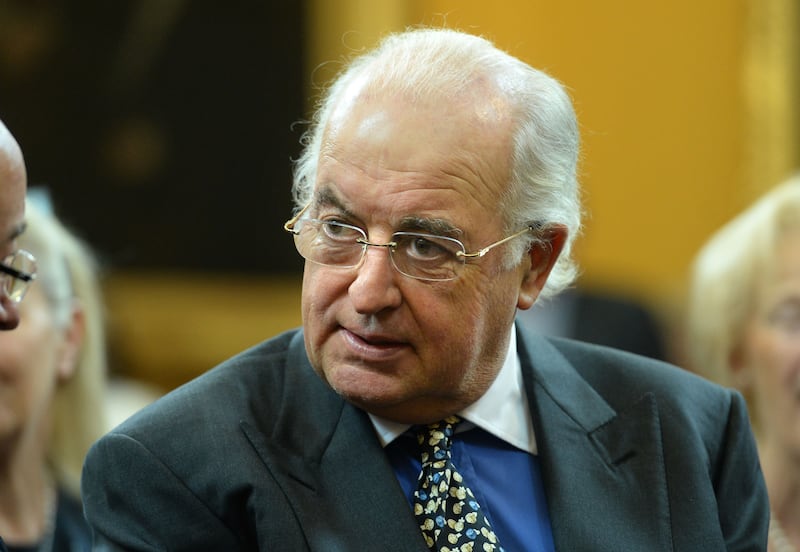Built in 1732 as the home for a Church of Ireland archbishop, the Cashel Palace in Cashel, South Tipperary, has played host to the famous during its 65-year history as a hotel.
Over the years, it has seen visits from Jacqueline Kennedy, Richard Burton and Elizabeth Taylor, Ronald Reagan, the late princess of Wales, Princess Diana, when she was still Diana Spencer.
Given its location, it was inevitable that the Cashel Palace would have close ties with Tipperary’s horse-racing fraternity, including trainer Vincent O’Brien.
It closed in 2014, before it was bought two years later by billionaire John Magnier’s family, the owners of the nearby Coolmore Stud. Last March, it opened as a five-star hotel.
READ MORE
The opening was greeted with local fanfare, and pride. However, plans to build a 28-bedroom property away from the hotel on a 0.6 hectare site at Moor Lane close to the Rock of Cashel has tested tempers.

In a place where few usually want to talk against the Magniers, or Coolmore, Tipperary County Council has received 56 planning objections to the plan to build the property, in two buildings, each one-and-a-half storeys in height.
The rooms are to be built, if approved, west of the Cashel Palace and its gardens and at the bottom of the southeast side of the Rock of Cashel. The council’s decision is due on December 19th.

Twelve archaeologists, historians and other academics, along with University College Dublin School of Archaeology, have lodged objections, concerned that it could scupper Unesco World Heritage status for the rock.
Rock of Cashel experts, archaeologist Dr Patrick Gleeson of Queen’s University Belfast, and medieval historian Dr Dagmar Ó'Riain-Raedel are among the academic objectors.
‘Wrong place’
Up to 20 Cashel residents opposed the plan before the closing date for submissions passed last Monday, including local Fine Gael councillor Declan Burgess, who lives at Moor Lane where the development is proposed.
The Magniers’ multimillion euro revamp of the Cashel Palace has brought a massive boost to his home town, says Burgess. The new extension is “tastefully” designed, but it is simply in the wrong place.
Last year, a planning application submitted by Trevester Unlimited of Cashel Palace Hotel, seeking permission for 24 bedroom suites in the same field, was withdrawn as it was expected to be refused, he says.
Locals are concerned, he adds. Residents in Moor Lane, Dominic Street and Rock Villas fear extra traffic on residential streets that will change the neighbourhood’s atmosphere.
In particular, they believe an emergency exit on Moor Lane will become the gate for the hotel’s commercial traffic. Mostly, though, they are concerned the building will rob Cashel of the view of the rock from Dominic Street.
Burgess says the field proposed is itself an archaeologically sensitive area, recalling that Tipperary County Council faced restrictions last year from the Department of Heritage when it drew up plans for a car park on an adjacent site.
World Heritage Site status for the rock would be much more beneficial for the town than 28 extra hotel bedrooms in the Cashel Palace, bringing the south Tipperary town to a “whole new level”, he says.
“As a council, we are mandated by our own town plan to pursue World Heritage Status and to protect the local landscape. I fear this development will lead to a serious alteration of that.”
‘Stunning view’
Solicitor Cian O’Carroll, who represented the late Vicky Phelan and other victims of the CervicalCheck controversy, is another local objector, concerned, too, about the impact on the famed Dominic Street views.
The Dominic Street houses were built by the county council in the 1950s “in what are often thought of as less enlightened times, yet the architects and local authority noted the competing interests of protecting that stunning view with the needs of housing, and a single-storey design was approved,” he tells the council in his submission.
“Now, all that would be undone if this development is permitted and the entire view of the rock along Dominic Street will be disrupted, if not punctured.”
Urging the council to protect Cashel’s heritage, he goes on: “The Rock of Cashel is not ours to use or abuse. It is ours to protect and preserve for our national and global heritage. In doing so, we not only fulfil our obligations to civilisation but also to our local economy.
“If we allow encroachment of development on this jewel, we will diminish it, our heritage and our local economy all in one disastrous act of self-harm.”
Some people in the town are unhappy, says Tipperary County Council cathaoirleach Cllr Roger Kennedy, who says he has been contacted by many.
The plan is “premature”, with so much hingeing on Unesco’s upcoming decision. The rooms could be built in another part of the same field, away from the houses and behind the hotel. “It’s a substantial field and there is room to go back,” he says.
Cordoba comparison
However, not everyone is opposed. Tom Wood, who was a supervisor guide at the rock for close to 30 years, believes the plan should be allowed, if the work matches the quality of what was done by the Magniers in the hotel restoration.
Wood, a former independent councillor, feels the project’s design is in keeping with the area and that the positioning of the buildings in the field does not interfere with local residents in the way the first application did.
People walking up to the rock will not be able to see the buildings until they are nearly at it, he says, arguing that his Spanish-born wife’s native Cordoba in Andalucía shows how modern and old can live side by side. And Córdoba is an Unesco World Heritage site.
“The fabulous heritage sites there for centuries are literally surrounded by buildings. Even when new, modern buildings are put up, they are in keeping with the historic structures that are there,” he says.
If this project is granted planning approval, he expects an archaeological examination will be one of the planning conditions. If any ruins of value are found, he suggests they can be incorporated into the development, perhaps by creating a glass floor to showcase an archaeological site.
But he adds: “If they come up with a major discovery then it [the hotel extension] shouldn’t go there.”
The hotel was contacted for comment but it said it did not wish to do so.














